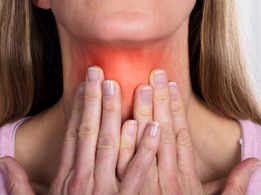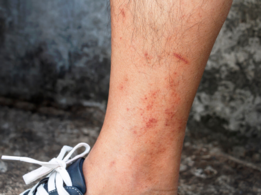01/6New study finds the virus can last for 28 days on notes and phone screens
)

As the novel coronavirus continues to ravage across the globe, researchers and scientists are working at an accelerated rate to understand more about the novel contagion. Given the virus is only 10 months old and was first discovered in December 2019, very little is still known about the SARS-CoV-2, the virus the causes COVID-19. A recent study, however, has shed light on the fact that the novel virus is ‘extremely robust’ in nature and can survive on various surfaces, including currency notes, glasses, plastic and stainless steel for up to 28 days.
02/6What does the new study say?
)

Contrary to earlier researchers that claimed that the SARS-CoV-2 can survive around three to seven days on smooth surfaces, the startling study conducted by the researchers of Australian agency CSIRO has found that the novel contagion is powerfully built and can remain infectious for up to 28 days. The scientists noted that in a tightly controlled environment, the SARS-CoV-2 virus can thrive for up to 28 days on smooth surfaces at room temperature i.e. at 20 degrees Celsius (68 degrees Fahrenheit), which is much higher than the regular flu virus.
03/6How was the research conducted?
)

To conduct the experiment, the scientists put the novel coronavirus on a dried mucus and left it on different surfaces and then kept it in a dark room for about a month. To remove the effect of Ultraviolent light from the Sun, that is known to inactivate the virus, the researchers used a dark room. They also found that the novel virus survived longer on smooth surfaces like stainless steel, glass and plastic when compared to porous surfaces like cotton. It also thrived longer on paper currency notes when compared to the plastic banknotes.
04/6The coronavirus may become harder to control during the winter season
)

The study has been published in the Journal of Virology and further highlighted that the survival rate of the virus reduced to less than one day at 40 degrees Celsius on some of the surfaces. On the other hand, the Influenza A virus survives for approximately 17 days at 20 degrees Celsius. The shocking findings not only underline the dangers of the virus becoming harder to control during the fast-approaching colder months but that it may also potentially spread through plastic banknotes and glasses of the mobile phone screens.
05/6Can COVID-19 spread through currency notes and phone surfaces?
)

While the usage of currency notes and its relation in the spread of the virus has been a cause of concern from the beginning of the pandemic, the recent study clearly highlights the longer survival time of the virus on banknotes. According to the researchers, “The findings related to banknotes are of a particular significance, considering the frequency of circulation and the potential for transfer of viable virus both between individuals and geographic locations."
Similarly, the robust nature of the virus also calls for regular cleaning, wiping and sanitizing of all glass surfaces--like your smartphones--as they potentially pose a risk of transmission of the virus.
06/6How to disinfect currency notes (paper notes) without destroying or soiling them?
)

While using cards and other modes of digital payment is a far safer option during the pandemic, it is also important to learn the correct way of sanitizing banknotes without soiling them. Portable UV light sanitizers are easily available in the market these days, owing to the pandemic. They can be used to sanitize not only paper notes but also your mobile phone, wallet etc. Since sanitizers and disinfectant sprays cannot be used to disinfect the currency notes, portable UV light is an excellent alternative for the same. In a situation, where sanitization of currency notes is not feasible, it is strongly advisable to properly sanitize your hands or wash them, after handling the banknotes.


































































![[Gym] Leg Training (voice-over with tips)
[Gym] Leg Training (voice-over with tips)](https://static.toiimg.com/thumb/77056786.cms?width=147&height=86)








closecomments
SIGN IN WITH
FacebookGoogleEmail